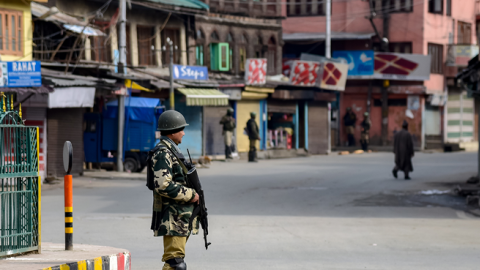Tensions between India and Pakistan have risen after a suicide attack in Pulwama, a town in Kashmir, killed over 40 paramilitary personnel. Though similar terrorist activity has occurred in this region since the 1990s, this time there is at least one new strategic dimension: the attitudes of the United States and China.
Both countries expressed their condolences to India over the attack. However, the United States obviously supports India. After the attack, the White House called on Pakistan “to end immediately the support and safe haven provided to all terrorist groups operating on its soil.”Although 58 countries issued a statement in the wake of the attack, this was the only statement to mention Pakistan by name.
USA’s National Security Advisor John Bolton offered words of encouragement to India, telling the Indian National Security Advisor that the United States “supported India’s right to self-defence against cross-border terrorism.” Just three years ago, India crossed the Line of Control in Kashmir and attacked terrorist camps. Bolton’s statement indicates that if India were to attack a terrorist camp on the Pakistan side of Kashmir today, the United States would side with India.
Meanwhile, China is clearly trying to protect Pakistan. Despite China expressing its condolences to India after the Pulwama attack, India views China as defending terrorists.
This is largely because China was the only country on the United Nations Security Council to oppose labeling Masood Azhar — the chief of Jaish-e-Muhammad, which claimed responsibility for the Pulwama attack — a global terrorist. As Jaish-e-Muhammad is a Pakistan-backed organisation, to India, it looked as though China was trying to protect Pakistan as its ally.
As a result, this terror incident has the hallmarks of a USA-China confrontation in the Indo-Pacific.
Changing world affairs
Indeed, such USA-China attitudes reflect changing world affairs. The United States has frozen aid to Pakistan largely because it does not believe that Pakistan has adequately cracked down on its domestic terrorists. But Pakistan’s cooperation with China is also a factor.
Taking cues from a 2016 Hudson Institute report by former Pakistani Ambassador to Sri Lanka (and the United States) Hussain Haqqani and Lisa Curtis, the Trump administration froze US$1.3 billion in aid to Pakistan in January.The United States is not alone; USA allies — including, through recent joint statements with India, the United Kingdom and Japan — have started demanding that Pakistan take a tougher stance toward terrorists.
The International Monetary Fund also refused to help Pakistan in 2018 despite the nation’s dire financial situation. China, Saudi Arabia the United Arab Emirates finally stepped in to assist Pakistan in addressing its financial problems, but Pakistan undoubtedly faces tough opposition from countries aligned with the United States.
What lesson should Sri Lanka learn from this changing global situation?
Enormous investments
Currently, Sri Lanka accepts enormous investments from China. China’s State-owned media, Global Times, reports that Sri Lanka owes ChinaUS$8 billion.A Report from the Centre for Global Development indicates that, of all the word’s countries, Sri Lanka is ranked the 22nd most in debt to China. In 2017, Sri Lankan Finance Minister Ravi Karunanayake told Japan’s NHK that Sri Lanka would need 400 years to pay it off. As a result, China could claim a right to control the Hambantota port for 99 years. Sri Lanka needs to change.
What should it do? The country has at least three choices.
Amount of money
First, Sri Lanka needs to cap the amount of money it accepts from China. Generally, people cannot have an elephant as pet because it is not easy to manage an elephant’s size. Similarly, Sri Lanka should only accept an amount of foreign investment that it can manage.
Second, even if it accepts China’s investment, Sri Lanka should check the feasibility of the intended project very carefully. After Sri Lanka received a huge investment from China to build the Hambantota port, all Sri Lanka got from the deal was an unused port, an airport and debt. It was obvious from the start that this was not a feasible project. Thus, this was an avoidable mistake.
Hambantota port endeavour
Third, Sri Lanka should cooperate with other countries aligned with the United States, Japan and India, as well as other European or Asian countries. For example, after the failed Hambantota port endeavour, Sri Lanka decided to borrow US$1 billion from China this year to build a road between Colombo and Kandy. However, borrowing money from China is just the first stage in this project. The second stage will be financed by Sri Lankan consortiums, and the third stage will be financed by Japanese loans. Sri Lanka spent two whole years on finding financial sources this time, but those two years will lead to a better result.
‘Sri Lanka at Crossroads’ is the title of a new book written by Asanga Abeyagoonasekera, Director General of the Institute for National Security Studies Sri Lanka under the Ministry of Defence. This title is right; Sri Lanka should care about its image in the world and make a careful decision at this crossroads.



















